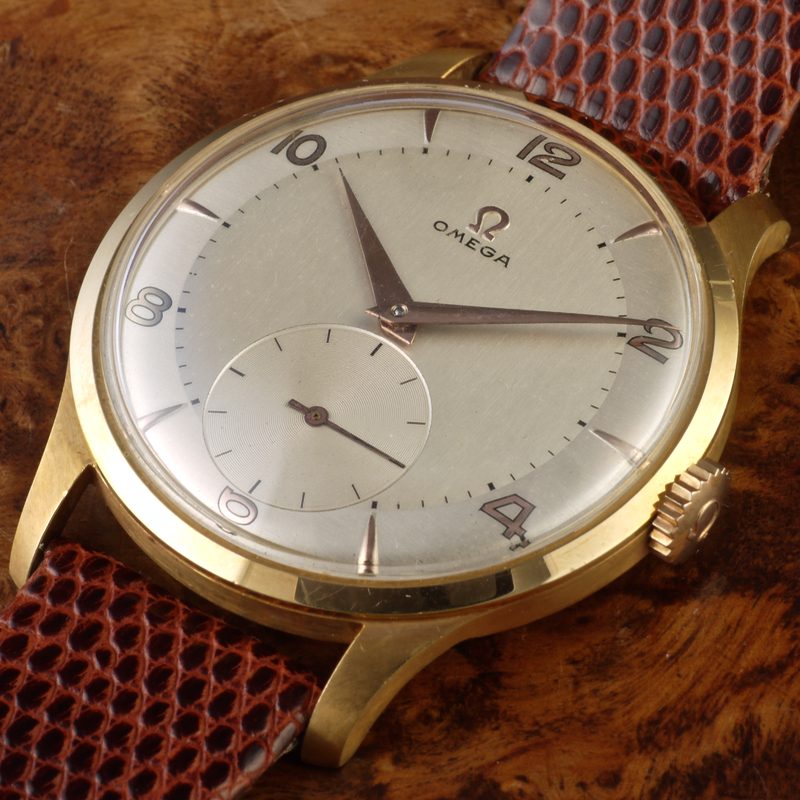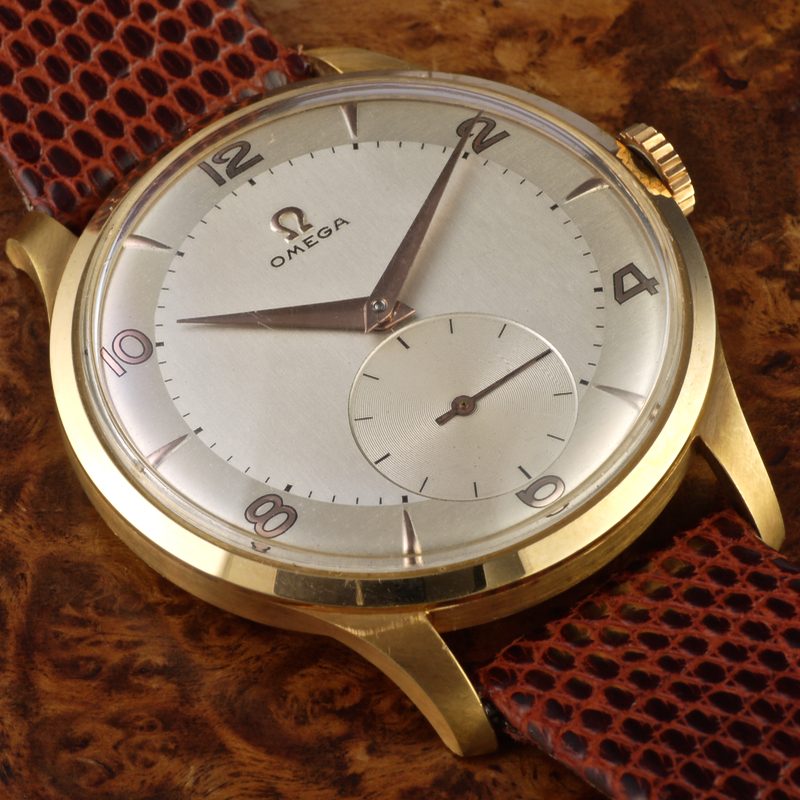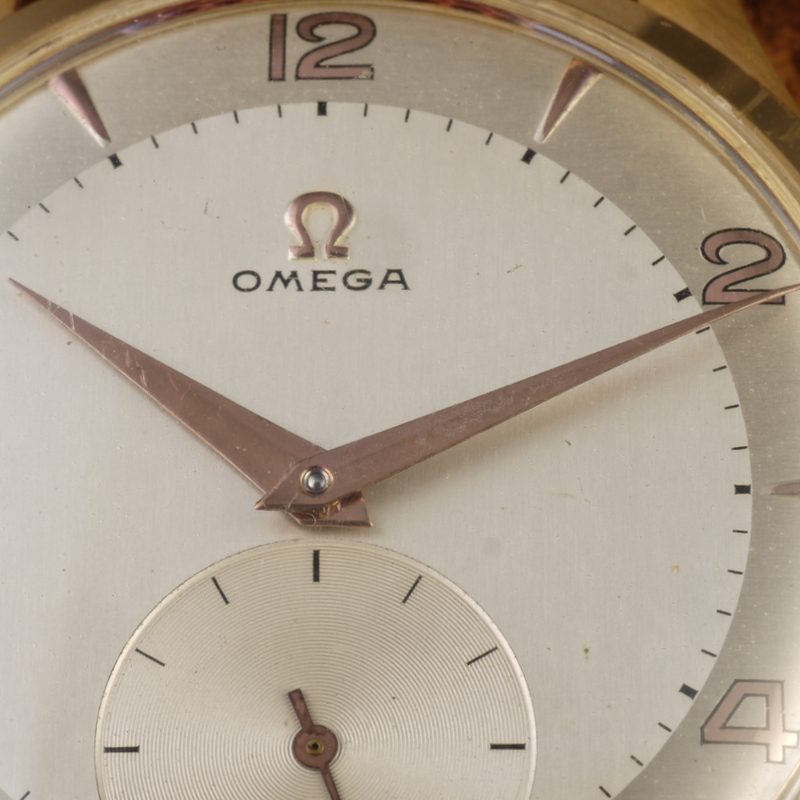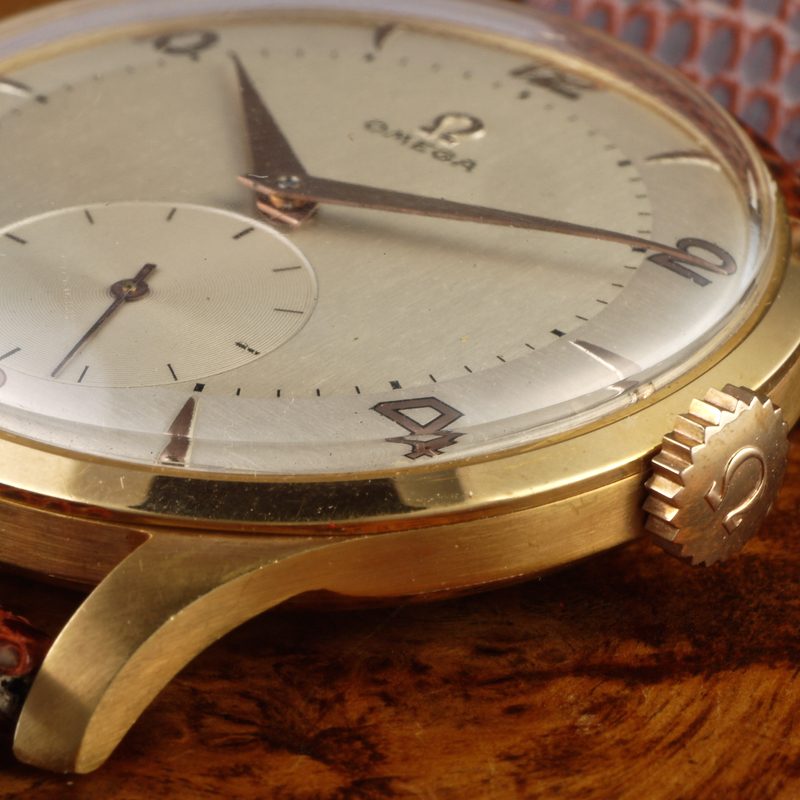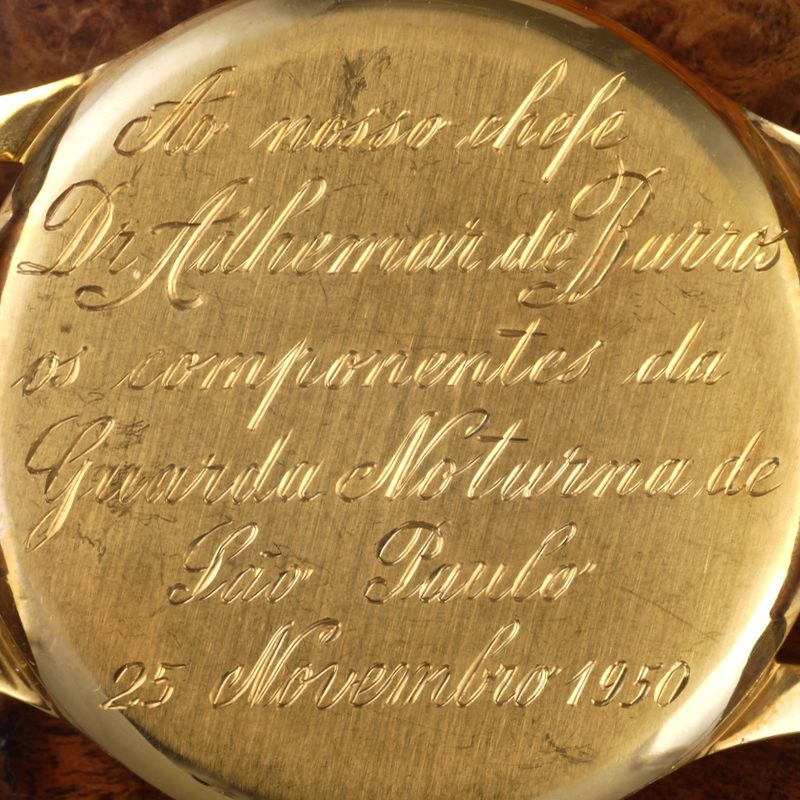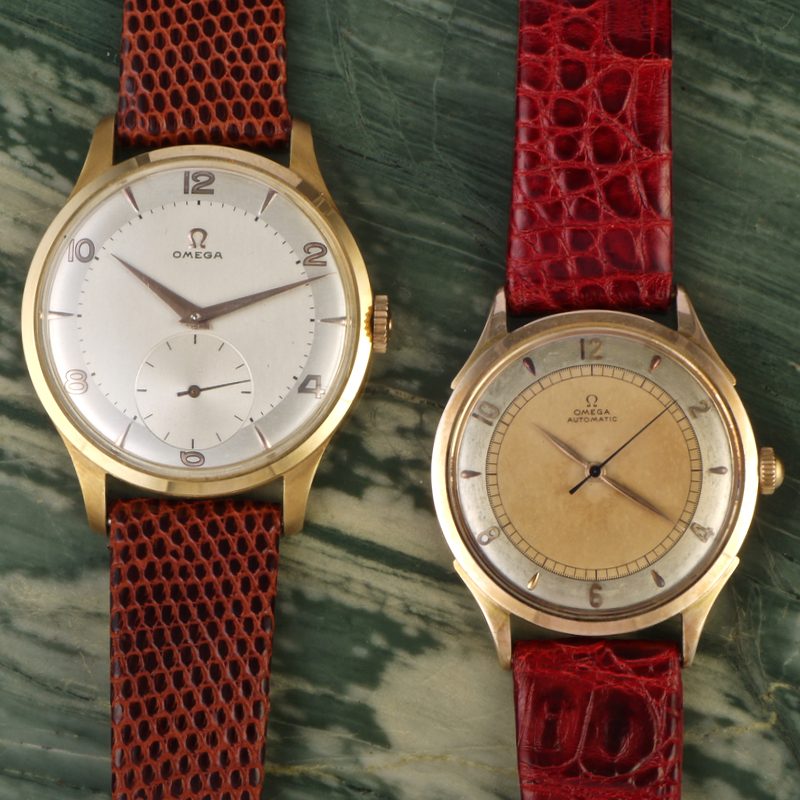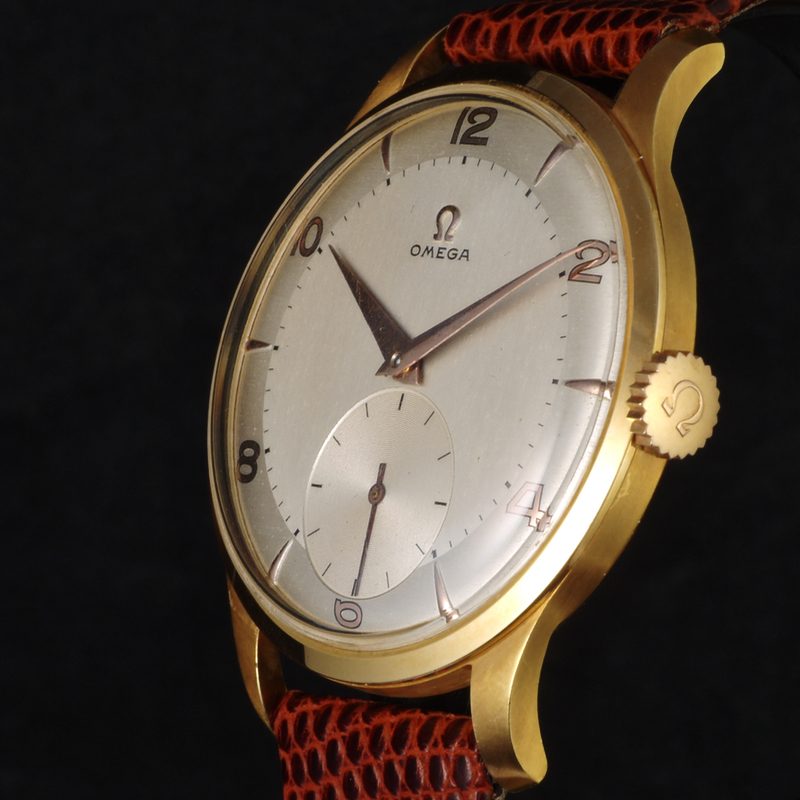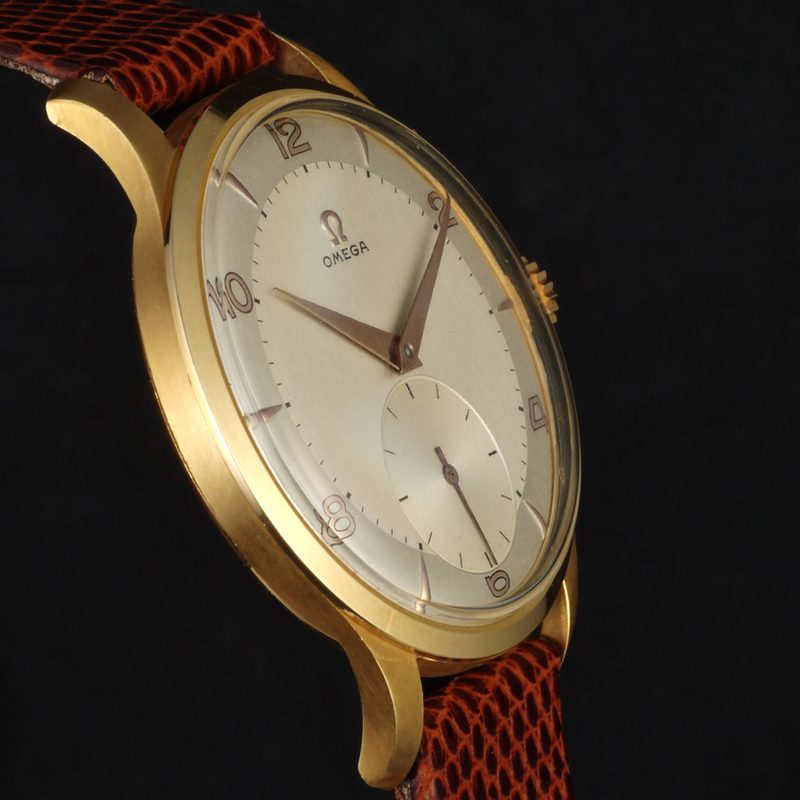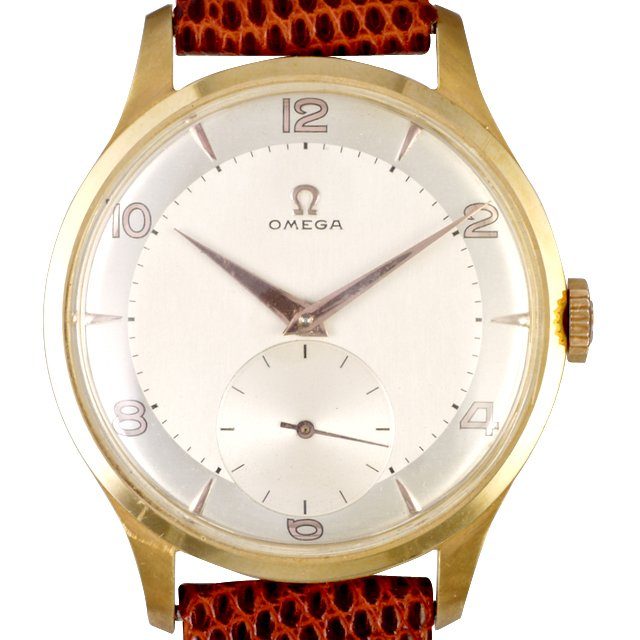Omega manual winding
Capt. James Gallagher and USAF crew make first round-the-world nonstop flight from Ft. Worth, Texas, and returning to same point: 23,452 miles in 94 hours, 1 minute1949 Omega ref. 2609 manual winding cal. 265, big 37.8mm. 18k gold case.
The 30T2 is responsible for much of Omega’s reputation for quality and accuracy.
Introduced in 1939, the 30T2 was a highly adaptable base movement and different versions were in production until 1963.
The design is simplicity itself, small enough to fit into a 33mm. dress watch case, but otherwise sized to allow the largest possible balance and barrel. It was so robust and elegantly designed that watchmakers still compliment its serviceability, durability and ease of assembly.
The British government ordered over 110,000 during the WWII.
In the 40s Omega produced a small series of chronometers, the 30T2 RG, which was a highly refined version of this movement.
After 1949, Omega changed their movement nomenclature and the same movements have three digit caliber numbers in the 260 and 280 ranges.
Omega was founded in 1848 by Louis Brandt at the age of 23. The brand’s reputation grew fast and in 1895 the watches achieved a precision of 30 seconds a day.
By the turn of the 19th century Omega was one of Switzerland’s largest watch companies with 240,000 watches produced annually and employing 800 people.
Omega made its debut in sports during the Gordon Bennett international ballooning Cup in 1917; since then Omega has gone on to be the official timekeeper at 21 Olympic Games.
In 1936 Omega set the remarkable World precision record of 97.8 points at the Kew-Teddington observatory in England.
In 1957, with motorsport in mind, Omega launched the Speedmaster, which in 1965 was chosen by NASA as its official chronometer in Space. Four years later the Moonwatch was the first watch to be worn on the Moon, when on 21st July 1969 Neil Armstrong made his giant leap for mankind. Currently Omega belongs to the Swatch Group.

